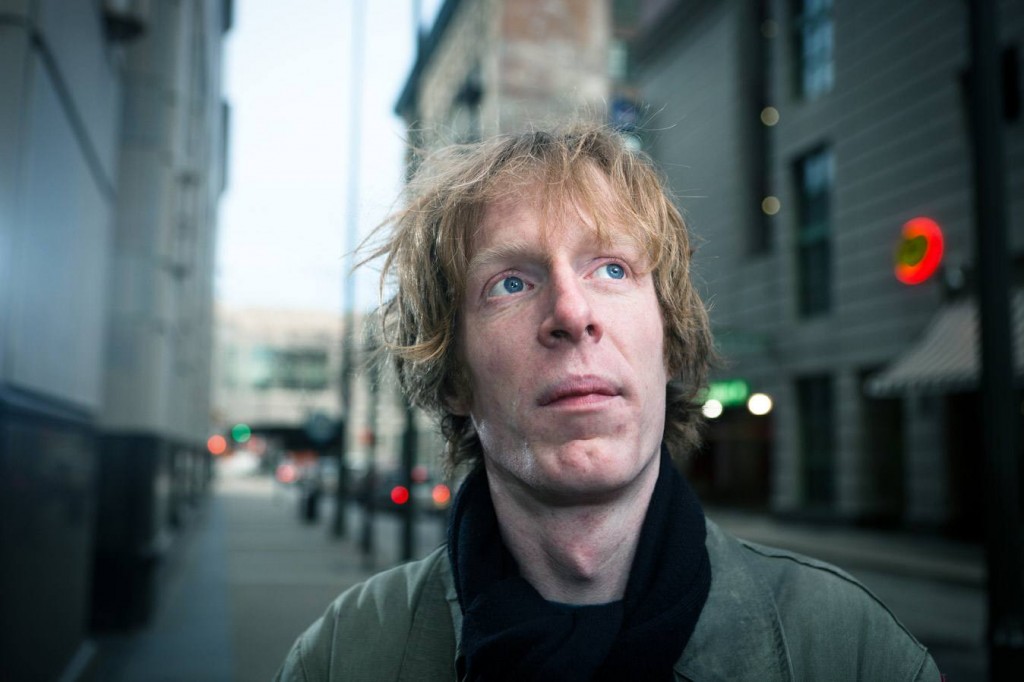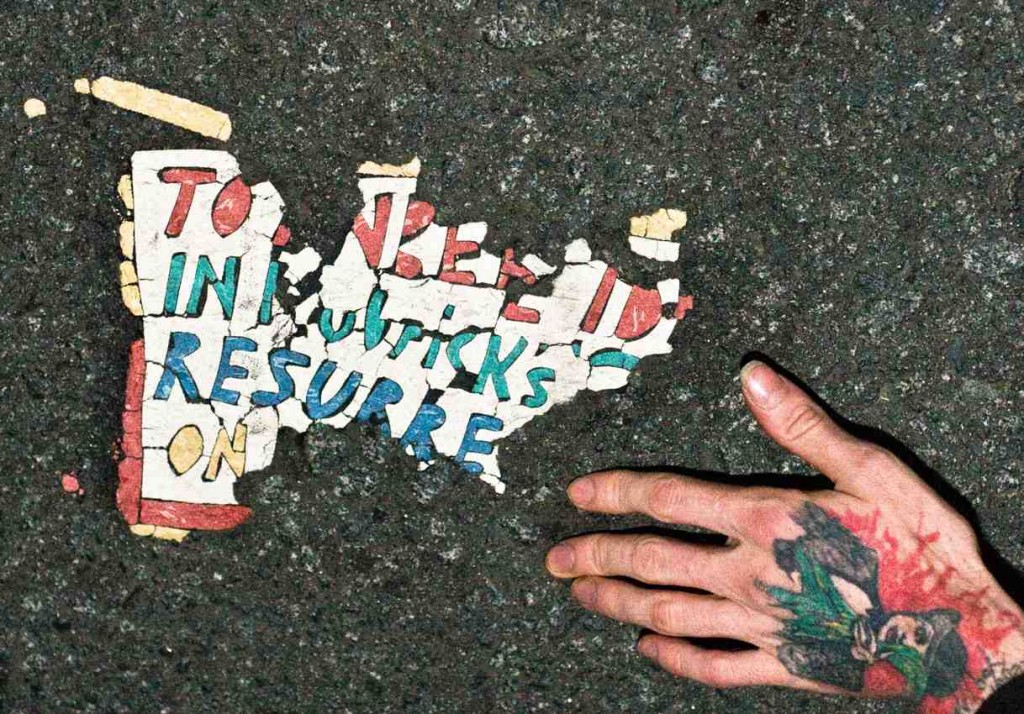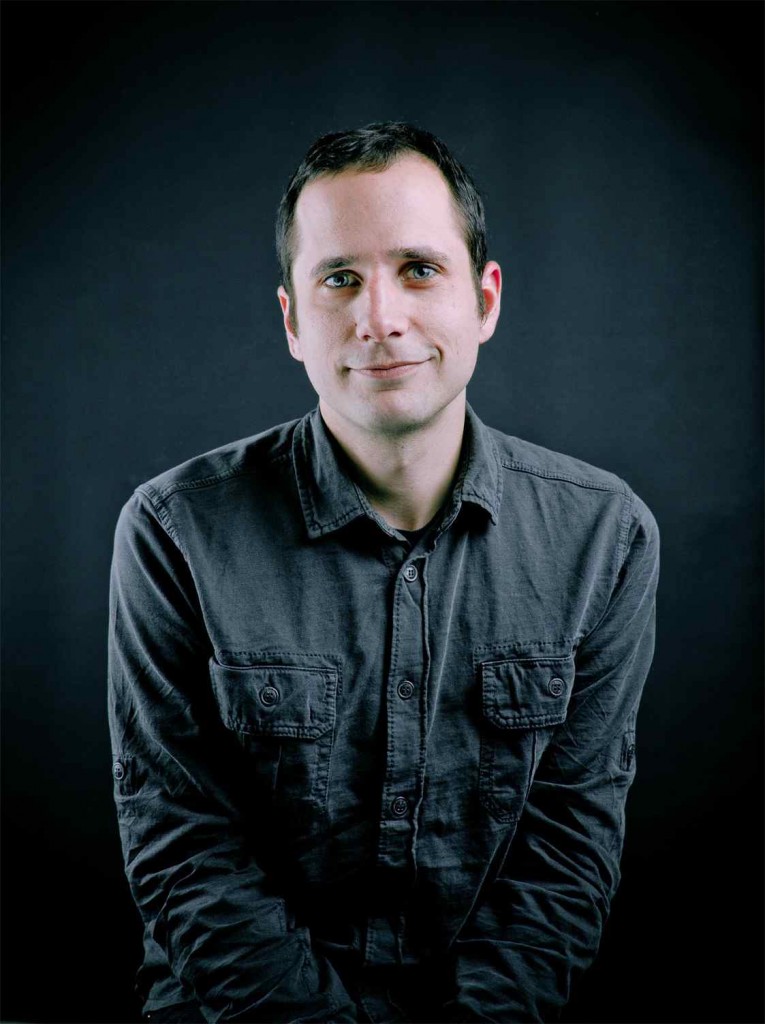We’ve all seen the message embedded in the roadways of Center City, usually in crosswalks. I actually saw one embedded in the left lane of the westbound 676 ramp to the Schuylkill expressway! I was stuck in bumper to bumper traffic and there it was just a half a car length ahead of me. How on earth did it get there? How do they all get there? What does it mean? Who’s doing it?

I was intrigued — but not obsessed. Only the truly obsessed, like Justin Duerr and his cohorts Colin Smith and Steve Weinik, who labored and researched and followed leads and interviewed people and wouldn’t let it go, only they could actually crack the mystery. And now, with Jon Foy’s beautiful movie “Resurrect Dead –The Mystery of the Toynbee Tiles” ten years in the making, we can all know the secret. And for reasons I will not explain I will say only that you, like the film’s obsessed protagonists, will, when you know, finally have to let it go, put it to rest, appreciate it, and move on.
Resurrect Dead launched in 2010 at the Philadelphia Film Festival and went on to gather a directing award for Foy at the Sundance Film Festival–amazing for a first-time filmmaker and musician who supported himself by cleaning houses while making the movie.

The film is having its Philadelphia debut at International House this week, and it is a must-see movie, especially in Philadelphia, where it is set, and where many of the Toynbee tiles exist. Besides, it’s a good yarn — a whodunnit with three winning detectives, one of whom, Duerr, is a compelling screen presence with an interesting life story.
Beautifully paced, the slowly-unfolding story of Justin’s discovery of and instant obsession with the tiles is told through interviews with him and his fellow detectives, Colin and Steve. There is some live footage as the young sleuths knock on doors and attend a shortwave radio convention looking for answers. They are always one step behind, as they find new tiles as well as old ones all around the country and some even in South America. Rather than believe in otherworldly interventions or that it’s some art school prank, the young men feel, as Justin says, there must be someone behind this.

Or is it a group? They find several names with associations to the tiles, albeit all very tenuous connections. Oddly enough, because of their sheer number and high profile locations, nobody has ever seen a tile being laid down on the road, although Justin comes very close, discovering one that still has the tar paper on it and hasn’t been run over yet.
Interspersed with the film footage are shots of illustrations — drawings of how the filmmaker imagines the Toynbee tiler works. After all, when you can’t film it–imagine it. Matt Rota’s illustrations in — in a style reminiscent of hyper-dramatic and sensational pulp fiction book covers — are a great addition, and help foster the noirish mystery, much of it filmed at night.
Justin’s life story gets interspersed, sometimes in family snapshots and sometimes filmed as it’s happening now (you see him at an opening of an art exhibit he had at Coalition Ingenu a few years back). You learn of his upbringing in a barn; his talent for art at an early age; his falling out with a high school art teacher who was too controlling for the strong-willed and free-spirited Justin, who drops out, leaves home at 17 and lives in a Philly squat with a bunch of kids. Nowadays, Justin is practicing his art again. He’s been in a group exhibit at City Hall, where I saw his work — a combination of fantasy imagery and words, quite obsessive and very beautiful.

Jon Foy’s film is a wonderful documentary whose other big star turn is by Philadelphia itself. The city, especially one rough and tumble South Philly neighborhood, feature prominently, and the sequences filmed and the people featured are completely natural and give great added flavor to a movie that immerses you in its intoxicating brew of nighttime rambles, a lot of staring down at the road, and discoveries of these tiles, which Foy refers to as urban guerilla art. Foy, by the way, composed the music for the movie. See the trailer and get hooked, guaranteed.
Screenings at International House on
Thursday, September 8 at 7pm;
Saturday, September 10 at 7pm;
Saturday, September 10 at 9:30pm;
Sunday, September 11 at 7pm; Monday, September 12 at 7pm
$9 general admission; $7 students and seniors; Free for members and residents of IHP. In advance at www.ihousephilly.org, 215.387.5125 or ½ hour before show time at the International House Philadelphia Box Office.
Prior to the Sept 8 screening, PIFVA presents: Inside the Indie Path to Sundance: Jon Foy (director) and Doug Block (executive producer) in Conversation Co-presented by IHouse Film 5:30-6:40.
$15 -General Admission; $6 – PIFVA and IHouse Members (Admission includes 7pm film screening)









